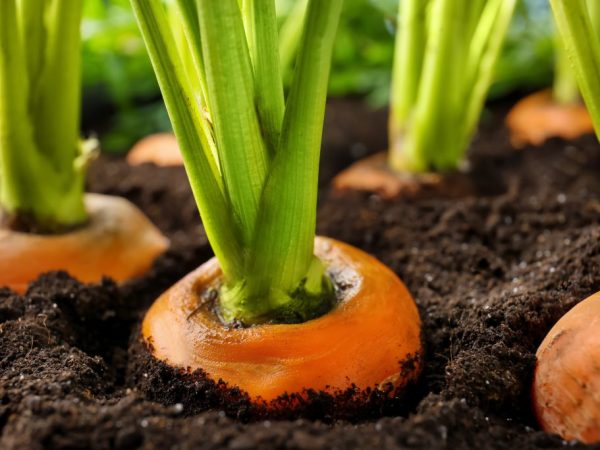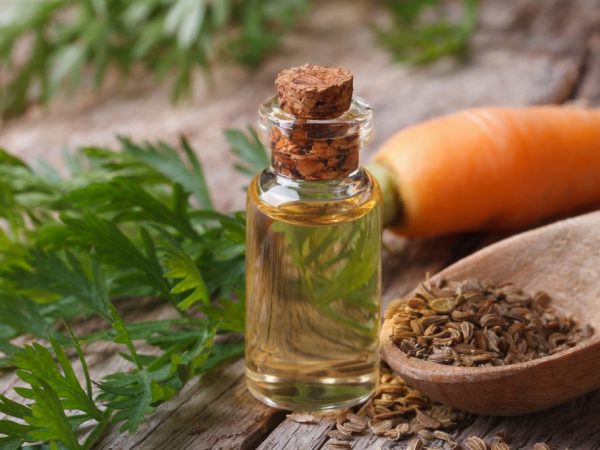Why do carrots have orange color?
Carrots are one of the most common vegetables. It has a bright and attractive appearance. The orange carrots took some time to acquire this color. Some of its species have a different color.

Why do carrots have orange color?
Vegetable ancestors
There were originally 2 cultivated varieties of carrots: Eastern and Asian. The anthocyanin pigment gave their color a purple hue, and in large quantities even black. Now this variety is found in Afghanistan, the Himalayas, Iran, India, Russia. There also grows a yellow carrot, more elastic and tart. The leaves of the oriental plant are pubescent and have a silvery tint.
The purple root crop began to be cultivated around the 10th century. In XIII he appeared in the countries of the Mediterranean Sea, in XV - in China. In Asia, the purple and yellow varieties are still cultivated today, but they are not as popular as their orange cousin.
In ancient times, there was no single name for this vegetable, so white varieties were often confused with parsnips. It was later given a separate name to distinguish it from related root crops.
The confusion continued until the Middle Ages, when purple and yellow species were brought back to European countries. Today, carrots are officially considered a valuable plant, and all varieties, from white to black, are subject to the Linnaean classification, which was eaten away in the 18th century.
Breeding work
The first experiment on a root crop was carried out by Dutch scientists in the 18th century. The aim of the breeding was to get the carrots to produce larger and juicy fruits. During the events, the vegetable lost some of its essential oils, but acquired a lot of other useful properties.
Up to this point, history has known a red, yellow, purple, white variety, but not orange. According to one of the versions, the vegetable owes its roots to Orange Prince William, allegedly as an expression of gratitude for Holland's gaining independence during the war with Spain.

The first experiment on a root crop was carried out by Dutch scientists in the 18th century.
According to another hypothesis, the orange color of the root crop was obtained by crossing the red variety with the yellow one. This happened in the 18th century, when the vegetable was brought to the Netherlands from Iran. It is the orange blossom that is considered the symbol of the Dutch state.
Peter I brought carrots in the form in which we know them to Russia together with other vegetables. For a long time, the root crop was used only as a remedy for the treatment of diseases. Only 2 centuries later, carrots began to be widely used for food.
From the 70s of the twentieth century to the present day, breeders continue to work on the quality of carrots, improving its usefulness. The percentage of carotene in it has almost doubled: by the twentieth century, carrots have become the champion in its content.
Color formation
Carrots are colored orange thanks to the carotenoid pigment - a natural dye. It is accumulated thanks to the DCAR_03255 gene. Beta-carotene is found in small amounts in tomatoes and broccoli.Splitting into small particles, the dye is converted into vitamin A. Excessive consumption of vegetables leads to carotenemia: a person's skin becomes orange from an excess of the amount of pigment in the blood.
Yellow and white colors are also rare. These varieties were obtained by crossing the oriental varieties with the wild Mediterranean ones.

Due to the carotenoid pigment, the carrots are orange
Orange carrots, like white ones, are a hybrid of oriental white varieties. The color of the vegetable depends on the content of carotenoid pigments.
- carotene A and B affect the orange and yellow color of carrots, and the percentage of beta-carotene can be more than 50%;
- lycopene and xanthophyll give the root vegetable a red color;
- the lower the carotene content in the carrot, the lighter it looks;
- the percentage of anthocyanins in the vegetable is responsible for its light purple or black color, and also gives it an antioxidant function.
Composition and useful properties
Carotene, which gives carrots an orange color, is contained in the product in large quantities: 9-10 mg per 100 g. The vegetable also contains vitamins C, E, group B, carbohydrates, in particular glucose, minerals: calcium, potassium, magnesium, phosphorus, sulfur is a valuable protein. The energy value of carrots is 28-31 kcal / 100 g.
Simple carrots are a really valuable product for the human body. Eating it every day, a person improves the condition of the skin, hair, nails, and ensures the prevention of visual acuity.
The root vegetable is able to regulate blood cholesterol levels and blood pressure. The fiber contained in orange and yellow carrots has a beneficial effect on intestinal function.
Differences between orange and purple varieties
If a carrot of the familiar orange color is a storehouse of beta-carotene, then its purple or blue-black relative is dominated by anthocyanin. This pigment, influencing the color, saturates the plant with many useful properties. Such carrots have an antioxidant effect on the body, anti-inflammatory, strengthens the immune system, lowers cholesterol levels and improves the work of blood vessels.
Conclusion
Orange carrots, familiar to a modern person, are a storehouse of vitamins and minerals necessary for the full functioning of the body. This is facilitated by the plant pigment carotenoid, which stains the root crop in a bright red color.


